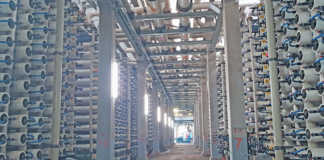Dr Bob Scholes, an ecologist working for the Council for Scientific and Industrial Research (CSIR), recently studied veldfires in Mpumalanga to gauge their contribution to global warming – and made some surprising findings. “Many people concerned about global warming are horrified to see the veld burning, but the facts about the effects of vegetation fires on the global atmosphere and climate are not straightforward,” he says.
He found that veldfires release nearly 2kg of carbon dioxide (CO2) for every kilogram of dry fuel burned – but that, in almost all cases, the equivalent amount of CO2 is taken back from the atmosphere within a few months when the plant life returns. “In South Africa, almost all fires are carbon neutral, and in many areas more CO2 is actually being taken up by the veld than emitted, as the veld is becoming bush-encroached, partly due to less frequent and intense fires,” he explains.
Dr Scholes says the main climate effect of fires derives from the non-CO2 greenhouse gases in the smoke, especially methane. This is 20 times more effective than CO2 at trapping energy near the earth’s surface. “It’s not taken up again after the fire, but slowly breaks down to CO2 in the atmosphere. Hot, well-aerated grass fires of the type most common in South Africa produce very little methane – only about 2g/kg of fuel.
“If the grass wasn’t burnt, it would most likely be grazed, which would result in roughly 15g of methane/kg. Even if it was left to be eaten by termites, 3g of methane would be produced.”Some of the 500 chemical compounds found in veld smoke react in the presence of sunshine to produce ozone.“ Not the ‘good’ ozone in the stratosphere, but ozone in the lower atmosphere that’s harmful to plants and animals, and which is also a strong greenhouse gas,” notes Dr Scholes.
“Fortunately, it’s so reactive it disappears within hours to days. The industrial-strength cloud of ozone that hangs over southern Africa during every burning season seems to have been present for thousands of years. It’s not a modern, man-induced feature.”The smoke also contains soot particles. “Their effects on the climate are still poorly understood, and can be both positive and negative. If the particles are dark in colour, they absorb sunlight and help warm the atmosphere. If they’re ashy and light in colour, they shade the earth and help cool it,” explains Dr Scholes.
“If the particles are injected into a moist atmosphere, they help to form clouds, which shade the earth even more effectively. In southern Africa, the overall result of all these factors seems to be a small warming effect,” he said.Another factor affecting climate is the darkening of the earth’s surface by the fire scar. “Before the fire, the land absorbs only about four fifths of the sunlight that strikes it. After the fire, the blackened surface absorbs nearly all the sun’s energy, heating the air above the land. Fortunately, the effect usually only lasts a few weeks and thus adds little to global warming,” says Dr Scholes.
His conclusion? The global warming effect of veldfires is quite small. “In southern Africa, the benefits to veld condition and biodiversity of a moderate amount of burning outweigh the climate change considerations in most cases,” says Dr Scholes.













